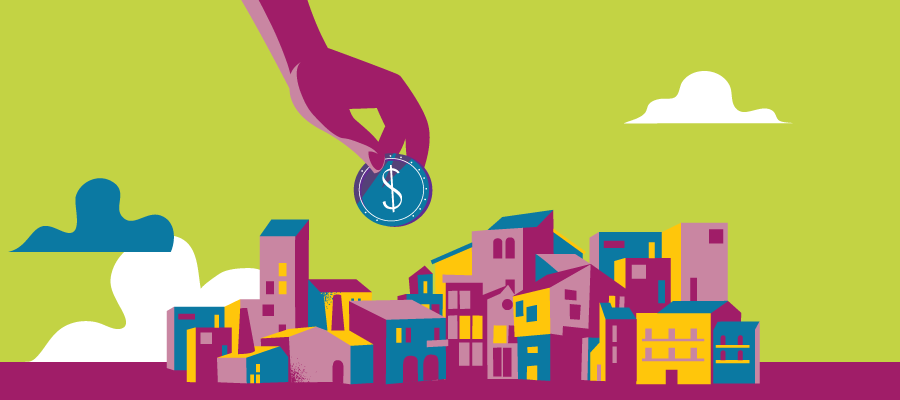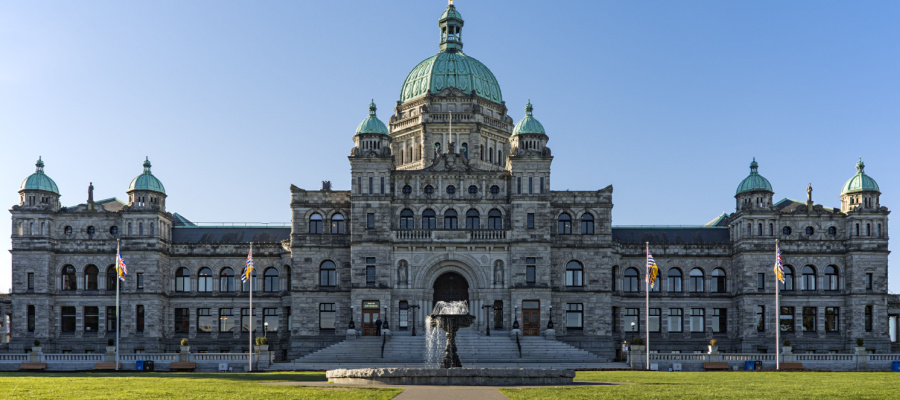BC Budget 2021: Stay-the-course budget misses the mark on key areas of urgency outside health

The BC government tabled a surprisingly stay-the-course budget today, making some improvements on the margins but missing the opportunity to shift BC towards a more inclusive and sustainable economy. While it appropriately includes large sums of time-limited spending relating to the pandemic (and indeed BC has led other provinces on pandemic spending), it is scarce on major, ongoing new dollars for priorities like child care, housing and climate action and missed the mark on becoming the most important budget in a generation.
Even on the pandemic front, it’s shocking that both provincial and federal governments have now tabled budgets without a real plan for paid sick days as we face down the third wave of COVID-19. Nor are there new tax fairness measures to tackle inequality and require the wealthiest few to pay more. Instead the budget emphasizes declining deficits over the next three years and a misplaced aspiration to return to balanced budgets through constrained spending.
Starting with a look at the fiscal picture, the BC government is running deficits, which in economic terms is precisely the right thing to do under the circumstances. However, the deficit for this past fiscal year (2020/21) is now forecast to be $8.1 billion, far less than the December 2020 forecast of $13.6 billion, meaning there was certainly fiscal room this past year to have deployed funds for priorities like paid sick days or additional supports to low-income renters.
The three-year fiscal plan outlines a $9.7 billion deficit in 2021/22 declining to $4.3 billion in 2023/24. As has been true in BC budgets for two decades now, each of these estimates is padded with large contingency funds, forecast allowances, and low-balling projections of economic growth over these years. So, there’s good reason to expect the usual “surprise good news” with respect to the headline budget balance numbers come next year. Notably, despite higher provincial debt levels, interest costs from debt remain close to multi-decade lows.
Where we do see substantial, non-pandemic increases in expenditure is on capital spending. These increases are driven primarily by BC Hydro (including a $3.25 billion increase over the next two years alone relative to Budget 2020 projections), but also includes some moderate increases in the health and education sectors. BC Hydro capital spending is identified as relating to “electoral generation, transmission and distribution”, with Site C presumably topping that list of expenditures. Notably, capital spending plans across a wider range of areas were already at historic highs prior to Budget 2021. However, the increases in Budget 2021 still fall short of the $3 billion per year increase promised in the NDP platform, even including BC Hydro.
A too-cautious approach to budgeting can itself be economically and fiscally misguided, since failing to address these challenges makes us vulnerable, as the pandemic has shown, and because tackling them is crucial to building a stronger economy going forward.
Child care
After the landmark federal commitment to build a quality, non-profit, affordable child care system across the country in yesterday’s federal budget, the BC Budget’s investment in child care is disappointing. The new provincial funding commitment of $233 million for child care over three years comes far short of what was promised in the election platform ($1.25 billion over the next two years alone). It seems clear that the BC government is happy to leave the heavy lifting on this file to their federal counterparts and wait for the newly announced federal funds to arrive rather than to accelerate its plans of bringing universal quality, affordable child care to families.
The announced expansion of new $10 a day child care spaces is very small—only 3,750—as are the addition of 400 more spaces to the Aboriginal Head Start program (which provides no-fee, culturally-based child care to Indigenous families) and the expansion of the Seamless Day Pilot for providing integrated before- and after-school child care in schools for children in kindergarten. For context, tens of thousands of families across the province are struggling with child care affordability and lack of spaces.
Regrettably, the new provincial funding for child care announced in this budget does little to transform our current fragmented patchwork of programs into a coherent system, nor does it prioritize expanding the non-profit child care sector (unlike the federal budget tabled yesterday). Plans for new spaces continue to depend on individual organizations to develop them and apply for public funding, which means continued use of public funds to support the acquisition of privately-held real estate assets (child care facilities). This has resulted in a proliferation of for-profit providers, which a recent study by the CCPA found charge significantly higher fees, hindering progress towards affordability. We continue to call for a dedicated capital funding allocation for child care so that BC can invest in publicly owned facilities instead of simply making capital grants to providers. This would recognize child care facilities as a crucial part of social infrastructure—similar to schools.
The plans to increase the wage top-up for early childhood educators to $4 per hour is welcome news for workers in this notoriously underpaid sector. However, it is provided without consideration of equity. The example set with the single site order in long-term care offers a better model, where wages across the sector were levelled-up to the unionized wage grid—rather than paid a top-up layered onto already-inequitable wages, as is being done in the child care sector.
Seniors care
The COVID-19 crisis revealed long-standing challenges in seniors care, including but not limited to the standards of care in long-term care facilities. It’s good to see that the single site health facility orders are continuing, and the election commitment to making leveled-up wages for long-term care workers permanent. New infrastructure funding for the renewal and expansion of publicly owned long-term care facilities is also welcome. Yesterday’s federal budget put forward a plan to negotiate national standards for long-term care over the next year, with modest funding to implement these standards starting in 2022/23 so it’s perhaps not surprising that today’s provincial budget doesn’t make bigger investments in long-term care. It is, however, disappointing to see no steps being taken to get profits out of long-term care or strengthen accountability requirements for for-profit providers, despite the serious issues with for-profit long-term care delivery that the pandemic brought into sharp focus.
There is some welcome new funding for training and hiring an additional 3,000 people to work as health support workers, many of whom will be working in long-term care and assisted living facilities. This is important because it represents opportunities and job creation in a sector that is largely female-dominated and racialized, and these investments will contribute to making the economy more inclusive.
Additionally, BC Budget 2021 provides some funds for expanding home care for seniors who need help aging in their own homes, and for better health care coordination for people with complex needs, which represent modest but much-needed enhancement of community-based seniors care.
Health care
In addition to $900 million in the current fiscal year to support the pandemic response, BC Budget 2021 invests $2.6 billion in supporting the public health care system and a further $500 million over 3 years to expand access to mental health services. The latter represents the largest mental health investment a BC government has made, though as many advocates have pointed out, the bar here is very low as mental health has been largely sidelined by previous governments.
New public health care funding supports initiatives that advocates have long called for, such as training and hiring an additional 3,000 people to work as health support workers, targeting people who have suffered job loss as a result of the pandemic; further increasing capacity for diagnostic imaging, surgeries and team-based and urgent primary care centres, building on previously announced initiatives to reduce wait times and expand access to primary care. Whether public funds will continue going to contracted private surgical clinics is unclear (currently the province is relying on both contracting with private clinics and funding public sector capacity, but should direct its focus entirely on the latter).
Importantly, Budget 2021 includes dedicated funds to fight systemic Indigenous racism in the healthcare system, and although the amount won’t make the headlines ($45 million over 3 years), this is a step forward and one to monitor going forward.
Notably missing are the free contraception and Fair Pharmacare enhancements promised in the election campaign.
The centerpiece of the new $500 million investment in mental health are long-overdue increases on funding to accelerate the government’s response to the opioid crisis, which has claimed over 7,000 lives in BC. The rising death toll of this crisis is irrefutable evidence that BC’s existing response has fallen vastly short of what is needed. Whether the $330 million earmarked over 3 years is sufficient to tackle this public health emergency remains to be seen.
Additional mental health funds in this budget will support much-needed initiatives promised in the election platform, including better mental health supports for children and youth (in schools and through new community Foundry centres), and increased access to mental health services for adults, including dedicated funds for Indigenous mental health and addictions services delivered by the First Nations Health Authority.
Additionally, new infrastructure spending will increase capacity and improve health care delivery in our public system.
Housing
Given that the housing affordability crisis in BC continues and prices are soaring, the budget contains surprisingly little that is new on the housing file. The biggest item is a $2 billion increase in rolling construction loan financing to help facilitate the construction of middle-income rental housing. This was announced last week and is in itself a welcome move, but it’s a very modest step when compared to the scale of housing need. The budget also continues to fund the operations of temporary shelter and hotel spaces related to the pandemic.
On the whole, though, the government seems to be banking on the idea that its previously-announced 10-year housing plan is up to the task of meeting housing needs in this province, which is a doubtful proposition. That pre-existing plan certainly contains some important and even historic investments, but much more will be needed to make housing affordable and end homelessness, which should be understood as a moral imperative.
Funding the next phase of BC’s poverty reduction strategy
Budget 2021 includes the previously announced increase to disability and social assistance benefits of $175/month and an increase in the senior’s supplement for low-income seniors of $50/month. While this is a historic increase that will benefit more than 300,000 of the most marginalized British Columbians, if only because of our regrettable history of leaving the poorest amongst us behind, it is considerably lower than the $300/month increase that advocates and the BC Basic Income Panel had been asking for, not to mention far lower than the actual poverty line.
There remains a troubling gap between the standard set by the $2,000/month Canada Emergency Relief Benefit (CERB) and later the Canada Recovery Benefits on one hand, and these low-income and disability assistance rates on the other. Even with the newly announced increase to $935/month for an individual in the “expected to work” category, income support rates remain vastly lower than the new standard set by the CERB for what is considered adequate to live on, which happens to be very close to the poverty line as measured by the revised 2018 Market Basket Measure for urban areas in BC.
Budget 2021 includes a few other notable, if modest, investments that will help with poverty reduction and a more inclusive recovery, including:
- Making transit free for children under 12 across the province.
- Some additional funding towards BC’s connectivity strategy to expand broadband Internet and cellular access to rural and remote communities.
- Additional funding to support adults with developmental disabilities through Community Living BC.
- Modest new funds to improve access to justice for women, racialized communities, Indigenous people, new immigrants and refugees, and low income British Columbians, building on previous investments in the area, though the amounts are lower than what advocates have called for and there’s no commitment to funding for legal representation.
However, Budget 2021 missed an important opportunity to reform our fragmented income social support system, and enhance income and wrap-around supports for people with disabilities, youth aging out of foster care and people (mostly women and children) escaping family and sexual violence, despite having received excellent practical recommendations on how to accomplish that from the BC Income Panel report.
Also missing are investments in areas that BC’s 10-year poverty reduction strategy, TogetherBC, flagged as outstanding, including homelessness, food insecurity, and access to affordable transportation. Another notable gap, most recently highlighted by the BC Basic Income Panel is the extremely limited access to dental, optical and other extended health services for low-income people and the working poor. Regrettably, low-income British Columbians are asked to wait for at least another year to get these needs addressed.
Despite documented increases in family violence during the pandemic, there is little new in this budget to improve services and income support for victims or increase funding for charities and non-profit organizations that support them.
Education and training
Budget 2021 provides some additional funds for K-12 education, however most of it seems to be to cover the costs associated with the growing number of students and negotiated staff wages, rather than enhancement to services. We know that additional funding is urgently needed to ensure that students with learning disabilities and special needs receive the supports they need to thrive in school, though notably this budget provides some welcome investments in expanding access to mental health services in schools, which were overdue. The public education system will also benefit from additional infrastructure investments in schools.
Unfortunately, Budget 2021 does not include additional supports for post-secondary students or for public post-secondary institutions generally, aside from funding for targeted workforce-related training programs, such as those in health care and some one-off short-term skills training initiatives. This means that provincial operating grants for post-secondary institutions continue to fall far short of actual costs, forcing public institutions to increase their reliance on tuition fees (including from international students).
Funding for temporary youth-employment initiatives, which was previously announced, is welcome but could have been considerably larger and more focused on promoting equity with a focus on supporting employment of women, racialized and Indigenous youth and other underrepresented groups.
Many had also been calling for the BC government to extend eligibility for tuition fee waivers for youth aging out of the foster care system from the current age limit of 26 (to all ages) but this wasn’t specifically included in the budget. However, such a measure could be put in place during the year as it would not be particularly expensive.
Overall, while there are many important if modest commitments in the budget, the cautious fiscal approach is a missed opportunity to go bigger and bolder to address some of the major challenges of our time—housing, child care, climate change, poverty, among others—and to tax the rich to sustain increases to public investments for the long term.
Topics: COVID-19, Economy, Education, Employment & labour, Health care, Housing & homelessness, Poverty, inequality & welfare, Privatization, P3s & public services, Provincial budget & finance, Seniors, Taxes, Women


